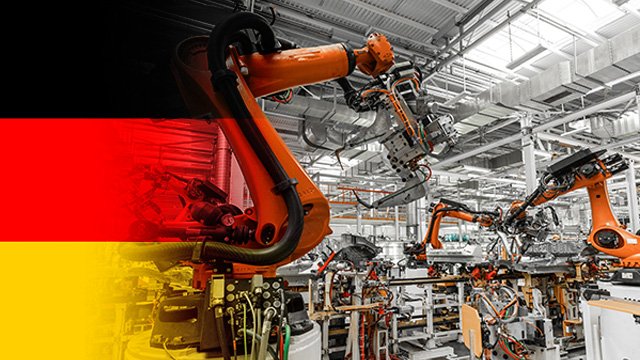Transforming Industries: The Role of Industrial Automation and Robotics

In the modern era, industries are experiencing an extraordinary shift, driven by the swift progression in technology. Among these transformative forces, industrial automation and robotics stand out as key drivers reshaping the landscape of manufacturing and beyond. From streamlining processes to enhancing productivity and safety,The merging of automation and robotics is transforming industries worldwide.
The Evolution of Automation
Enhancing Efficiency and Productivity
Ensuring Safety and Quality
Empowering Innovation and Adaptability
Driving Sustainable Practices
The Future of Automation:
Conclusion
The Evolution of Automation
The journey of automation in industries dates back to the early 20th century with the introduction of mechanization, where manual tasks were gradually replaced by machines. However, the true revolution began with the advent of computerization in the mid-20th century, which enabled greater control and precision in industrial processes.
Today, we stand at the precipice of a new era marked by the convergence of automation, robotics, and artificial intelligence (AI). This convergence is driving unprecedented levels of efficiency, flexibility, and innovation across various sectors, including manufacturing, logistics, healthcare, and agriculture.
Enhancing Efficiency and Productivity
One of the primary benefits derived from industrial automation and robotics is the substantial improvement in efficiency and productivity.Automated systems can operate around the clock with minimal downtime, leading to increased output and reduced lead times. Equipped with sophisticated sensors and actuators, robotics can execute complex tasks swiftly and accurately, often surpassing human abilities in various scenarios.
Moreover, automation allows for the optimization of resources, including raw materials, energy, and manpower. By streamlining processes and minimizing waste, industries can achieve substantial cost savings while maintaining high standards of quality.
Ensuring Safety and Quality
Safety holds utmost importance in industrial environments, with automation playing a pivotal role in reducing the hazards linked to risky tasks.. Robots are deployed in environments deemed unsafe for humans, such as handling toxic chemicals or operating in extreme temperatures. By removing human workers from harm's way, automation helps prevent accidents and injuries, thereby fostering a safer work environment.
Furthermore, automation contributes to ensuring consistency and quality in production processes. With precise control and monitoring, deviations and defects are promptly identified and addressed, leading to improved product quality and customer satisfaction.
Empowering Innovation and Adaptability
Innovation is the lifeblood of progress, and industrial automation provides the foundation for continuous improvement and adaptation. State-of-the-art technologies such as machine learning and predictive analytics streamline predictive maintenance processes, enabling machines to anticipate maintenance needs and schedule repairs preemptively, thus minimizing operational interruptions to the fullest extent. Moreover, automation facilitates greater agility and responsiveness to market demands. Modular and reconfigurable production lines allow for rapid retooling and customization, enabling manufacturers to swiftly pivot in response to changing consumer preferences or market dynamics.
Driving Sustainable Practices:
In addition to economic benefits, industrial automation and robotics contribute to sustainability initiatives by promoting resource efficiency and environmental conservation. By optimizing energy usage and reducing waste generation, automated systems help minimize the ecological footprint of industrial operations. Furthermore, automation enables the adoption of sustainable practices such as precision agriculture and smart manufacturing, which prioritize resource conservation and minimize environmental impact.
The Future of Automation:
As we look ahead, the evolution of industrial automation and robotics shows no signs of slowing down. Emerging technologies such as collaborative robots (cobots), autonomous vehicles, and swarm robotics are poised to further revolutionize industries, unlocking new levels of efficiency, flexibility, and innovation. However, amidst these advancements, it is essential to address the socio-economic implications of automation, including concerns about job displacement and skills development. Efforts to reskill and upskill the workforce, coupled with policies supporting inclusive growth, will be crucial in ensuring that the benefits of automation are shared equitably across society.
Conclusion
Industrial automation and robotics represent a transformative force reshaping
industries and driving progress towards a more efficient, safe, and sustainable future.
By leveraging automation, industries can open up novel avenues for innovation and expansion while
tackling the challenges characteristic of the 21st century.
Hannover is focussed on allowing research to become reality by ensuring technology transfer between the
research and industry players. Excellent examples of this in the field of production technology are the
Hannover Hannover Centre for Production Technology (PZH) as well as the Integrated Production (IPH)














 Twitter
Twitter